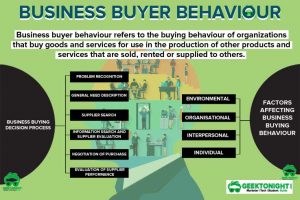What is Marketing Communication?
Marketing communications are messages and related media used to communicate with a market. Marketing communications are the promotion part of the marketing mix or the four Ps: price, place, promotion, and product.
Table of Content
Those who practize advertising, branding, brand language, direct marketing, graphic design, marketing, packaging, promotion, sponsorship, publicity, public relations, sales, sales promotion and online marketing are termed marketing communicators, and marketing communication managers.
Marketing communication represents the collection of all elements in an organization, marketing mix that facilitates exchanges by establishing shared meaning with the organization’s customers or clients.
Process of Marketing Communication
The marketing communication process can be very complex but it is based on the universal model used in all forms of communication which includes a sender, the message, receivers, and a medium and, in the case of two-way communication, feedback.
However, this universal model needs to be presented in the context of marketing communications in order that its relevance to marketing is understood. The purpose of a marketing communication campaign can best be described by reference to the hierarchy of communication effects represented by the following model as shown in Fig.

Communicator
Communicator (sender or encoder) is the one who initiates the communication process. He may be an editor, a reporter, a film-maker, a teacher, a writer, a speaker, a leader or anybody who takes the initiative to start a dialogue. Before one speaks or writes, the message is conceptualized first and then encoded.
Encoding
Encoding is the formulation of messages in the communicator’s mind, that is, the communicator not only translates his purpose (ideas, thoughts or information) into a message but also decides on the medium to communicate his planned message.
Message Channel
A message media or channel is the vehicle through which a message is carried from the communicator to the receiver. The channels of communication are many—written, spoken, verbal, non-verbal, mass media like TV, radio, newspapers, books, etc. Choosing the appropriate channel, one most suitable for the message as well as the receiver, is a complicated task.
Decoding
Decoding is the interpretation of the message by the receiver. Actually, the receiver looks for the meaning in the message, which is common to both the receiver and the communicator.
Feedback
Feedback is the response or acknowledgement of receiver to the communicator’s message. The exchange is possible only if the receiver responds. Even through fluttering eyelids, raising an eyebrow, making a face, organizing a point and asking for an explanation, the message is shaped and reshaped by the communicator and the receiver until the meaning becomes clear.
Noise
Noise is an interruption that can creep in at any point of the communication process and make it ineffective. Environment is one major cause that interferes with message reception: like noises from the roadside, constant chattering of individuals outside the communication act, blaring loudspeaker, faulty transmission, etc.
Noise can occur in other forms also; poor handwriting, heavy accent or soft speech, communication in a poorly lit room, etc. In fact, these are barriers to effective communication. For smooth and effective communication, it is necessary to eliminate or reduce noise as far as possible.
Elements of Marketing Communication Mix
A company’s total marketing communications mix consists of the specific blend of advertising, personal selling, sales promotion, and public relations tools that the company uses to pursue its advertising and marketing objectives.
The five major types of promotion are:
- Advertising: Any paid form of non-personal presentation and promotion of ideas, goods, or services by an identified sponsor.
- Personal Selling: Personal presentation by the firm’s sales force to make sales and build customer relationships.
- Sales Promotion: Short-term incentives to encourage the purchase or sale of a product or service.
- Public Relations: Building good relations with the company’s publics by obtaining favourable publicity, building up a good “corporate image,” and handling or heading off unfavourable rumours, stories, and events.
- Direct Marketing: Direct communications with carefully targeted individual consumers to obtain an immediate response. The use of mail, telephone, fax, e-mail, and other non-personal tools to communicate directly with specific consumers or to solicit a direct response.
Tools of Marketing Communication
A marketing person has many tools at his disposal for generating awareness and supporting the selling effort. While there are numerous marketing communication tools, there are also numerous mixes for these tools.
One important note is remembered that marketing communication tools do improve understanding your product or service, reinforcing your messages, supporting the sales cycle and generating awareness.
- Advertising: This tool can get your messages to large audiences efficiently through such avenues as radio, TV, magazines, newspapers (ROP), Internet, billboards and other mobile technological communication devices. This method can efficiently reach a large number of consumers, although the costs may be somewhat expensive.
- Sales Promotion: This tool is used through coupons, contests, samples, premiums, demonstrations, displays or incentives. It is used to accelerate short-term sales, by building brand awareness and encouraging repeat buying.
- Public Relations: This integrated marketing communications tool is initiated through public appearances, news/press releases or event sponsorships, to build trust and goodwill by presenting the product, company or person in a positive light.
- Direct Marketing: This tool will utilize e-mail, mail, catalogues, encourage direct responses to radio and TV, in order to reach targeted audiences to increase sales and test new products and alternate marketing tactics.
- Personal Selling: Setting sales appointments and meetings, home parties, making presentations and any type of one-to-one communication, to reach your customers and strengthen your relationship with your clients, initiate this IMC (Integrated Marketing Communication) tool.
- Internet Marketing: Websites provide a new way of transmitting information, entertainment, and advertising, and have generated a new dimension in marketing: electronic commerce. E-commerce is the term used to describe the act of selling goods and services over the Internet.
Marketing Management Topics
Go On, Share & Tell Us What You Think!
Did we miss something in Marketing Management Tutorial or You want something More? Come on! Tell us what you think about our post on Marketing Communication in the comments section and Share this post with your friends.
Marketing Management
(Click on Topic to Read)
- What Is Market Segmentation?
- What Is Marketing Mix?
- Marketing Concept
- Marketing Management Process
- What Is Marketing Environment?
- What Is Consumer Behaviour?
- Business Buyer Behaviour
- Demand Forecasting
- 7 Stages Of New Product Development
- Methods Of Pricing
- What Is Public Relations?
- What Is Marketing Management?
- What Is Sales Promotion?
- Types Of Sales Promotion
- Techniques Of Sales Promotion
- What Is Personal Selling?
- What Is Advertising?
- Market Entry Strategy
- What Is Marketing Planning?
- Segmentation Targeting And Positioning
- Brand Building Process
- Kotler Five Product Level Model
- Classification Of Products
- Types Of Logistics
- What Is Consumer Research?
- What Is DAGMAR?
- Consumer Behaviour Models
- What Is Green Marketing?
- What Is Electronic Commerce?
- Agricultural Cooperative Marketing
- What Is Marketing Control?
- What Is Marketing Communication?
- What Is Pricing?
- Models Of Communication
Sales Management
- What is Sales Management?
- Objectives of Sales Management
- Responsibilities and Skills of Sales Manager
- Theories of Personal Selling
- What is Sales Forecasting?
- Methods of Sales Forecasting
- Purpose of Sales Budgeting
- Methods of Sales Budgeting
- Types of Sales Budgeting
- Sales Budgeting Process
- What is Sales Quotas?
- What is Selling by Objectives (SBO)?
- What is Sales Organisation?
- Types of Sales Force Structure
- Recruiting and Selecting Sales Personnel
- Training and Development of Salesforce
- Compensating the Sales Force
- Time and Territory Management
- What Is Logistics?
- What Is Logistics System?
- Technologies in Logistics
- What Is Distribution Management?
- What Is Marketing Intermediaries?
- Conventional Distribution System
- Functions of Distribution Channels
- What is Channel Design?
- Types of Wholesalers and Retailers
- What is Vertical Marketing Systems?
Marketing Essentials
- What is Marketing?
- What is A BCG Matrix?
- 5 M'S Of Advertising
- What is Direct Marketing?
- Marketing Mix For Services
- What Market Intelligence System?
- What is Trade Union?
- What Is International Marketing?
- World Trade Organization (WTO)
- What is International Marketing Research?
- What is Exporting?
- What is Licensing?
- What is Franchising?
- What is Joint Venture?
- What is Turnkey Projects?
- What is Management Contracts?
- What is Foreign Direct Investment?
- Factors That Influence Entry Mode Choice In Foreign Markets
- What is Price Escalations?
- What is Transfer Pricing?
- Integrated Marketing Communication (IMC)
- What is Promotion Mix?
- Factors Affecting Promotion Mix
- Functions & Role Of Advertising
- What is Database Marketing?
- What is Advertising Budget?
- What is Advertising Agency?
- What is Market Intelligence?
- What is Industrial Marketing?
- What is Customer Value
Consumer Behaviour
- What is Consumer Behaviour?
- What Is Personality?
- What Is Perception?
- What Is Learning?
- What Is Attitude?
- What Is Motivation?
- Segmentation Targeting And Positioning
- What Is Consumer Research?
- Consumer Imagery
- Consumer Attitude Formation
- What Is Culture?
- Consumer Decision Making Process
- Consumer Behaviour Models
- Applications of Consumer Behaviour in Marketing
- Motivational Research
- Theoretical Approaches to Study of Consumer Behaviour
- Consumer Involvement
- Consumer Lifestyle
- Theories of Personality
- Outlet Selection
- Organizational Buying Behaviour
- Reference Groups
- Consumer Protection Act, 1986
- Diffusion of Innovation
- Opinion Leaders
Business Communication
- What is Business Communication?
- What is Communication?
- Types of Communication
- 7 C of Communication
- Barriers To Business Communication
- Oral Communication
- Types Of Non Verbal Communication
- What is Written Communication?
- What are Soft Skills?
- Interpersonal vs Intrapersonal communication
- Barriers to Communication
- Importance of Communication Skills
- Listening in Communication
- Causes of Miscommunication
- What is Johari Window?
- What is Presentation?
- Communication Styles
- Channels of Communication
- Hofstede’s Dimensions of Cultural Differences and Benett’s Stages of Intercultural Sensitivity
- Organisational Communication
- Horizontal Communication
- Grapevine Communication
- Downward Communication
- Verbal Communication Skills
- Upward Communication
- Flow of Communication
- What is Emotional Intelligence?
- What is Public Speaking?
- Upward vs Downward Communication
- Internal vs External Communication
- What is Group Discussion?
- What is Interview?
- What is Negotiation?
- What is Digital Communication?
- What is Letter Writing?
- Resume and Covering Letter
- What is Report Writing?
- What is Business Meeting?
- What is Public Relations?
Business Law
- What is Business Law?
- Indian Contract Act 1872
- Essential Elements of a Valid Contract
- Types of Contract
- What is Discharge of Contract?
- Performance of Contract
- Sales of Goods Act 1930
- Goods & Price: Contract of Sale
- Conditions and Warranties
- Doctrine of Caveat Emptor
- Transfer of Property
- Rights of Unpaid Seller
- Negotiable Instruments Act 1881
- Types of Negotiable Instruments
- Types of Endorsement
- What is Promissory Note?
- What is Cheque?
- What is Crossing of Cheque?
- What is Bill of Exchange?
- What is Offer?
- Limited Liability Partnership Act 2008
- Memorandum of Association
- Articles of Association
- What is Director?
- Trade Unions Act, 1926
- Industrial Disputes Act 1947
- Employee State Insurance Act 1948
- Payment of Wages Act 1936
- Payment of Bonus Act 1965
- Labour Law in India
Brand Management






